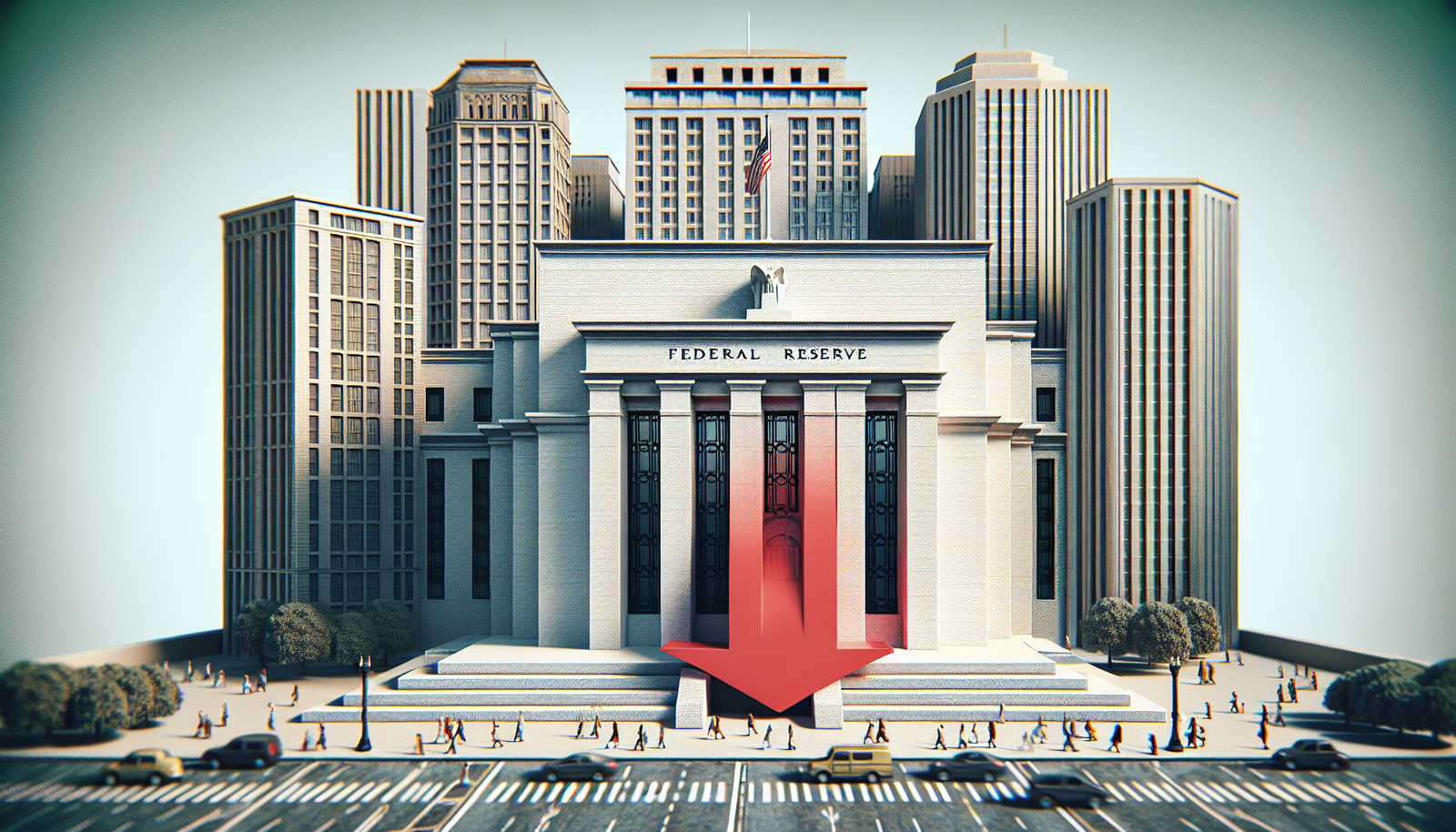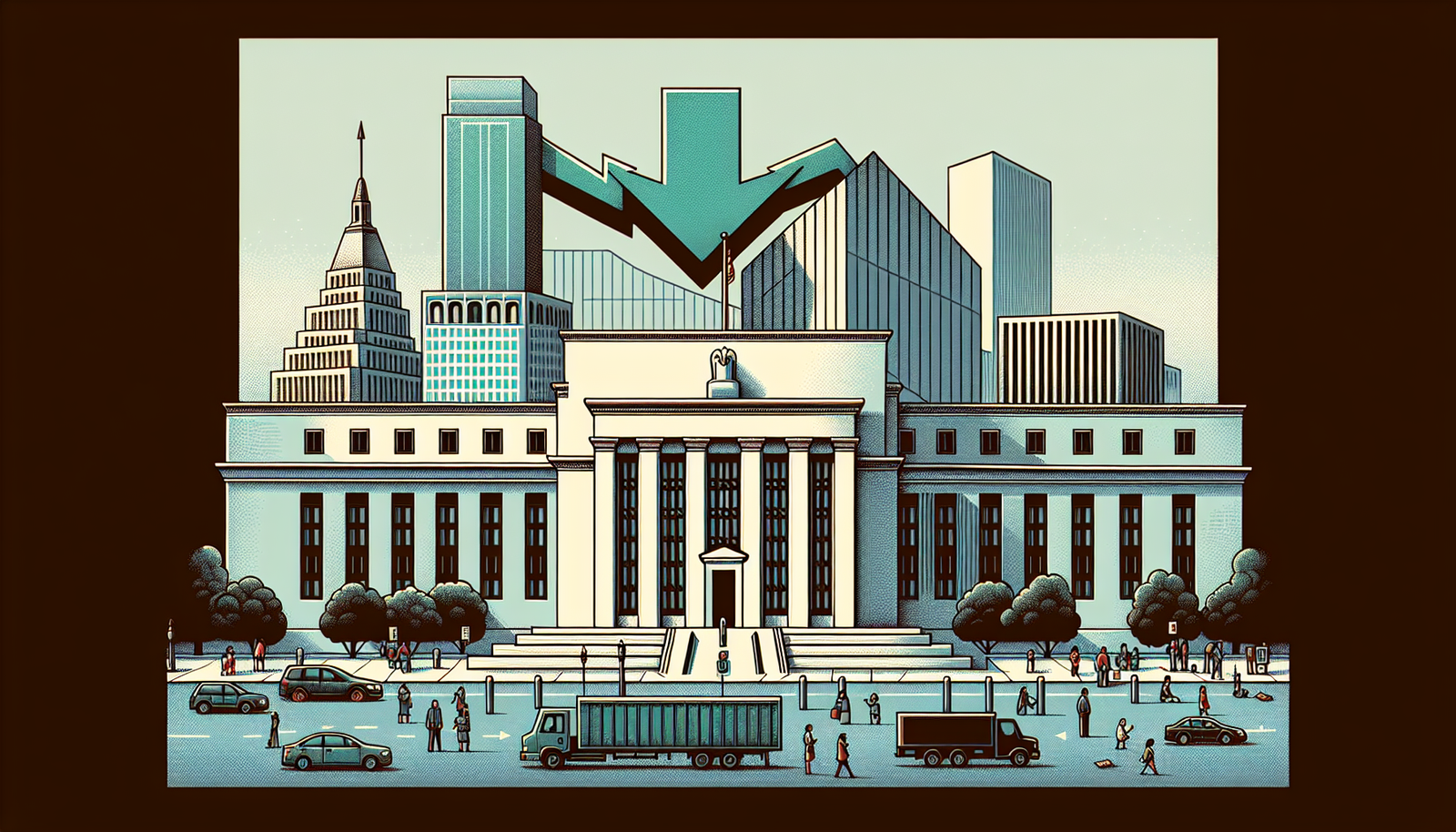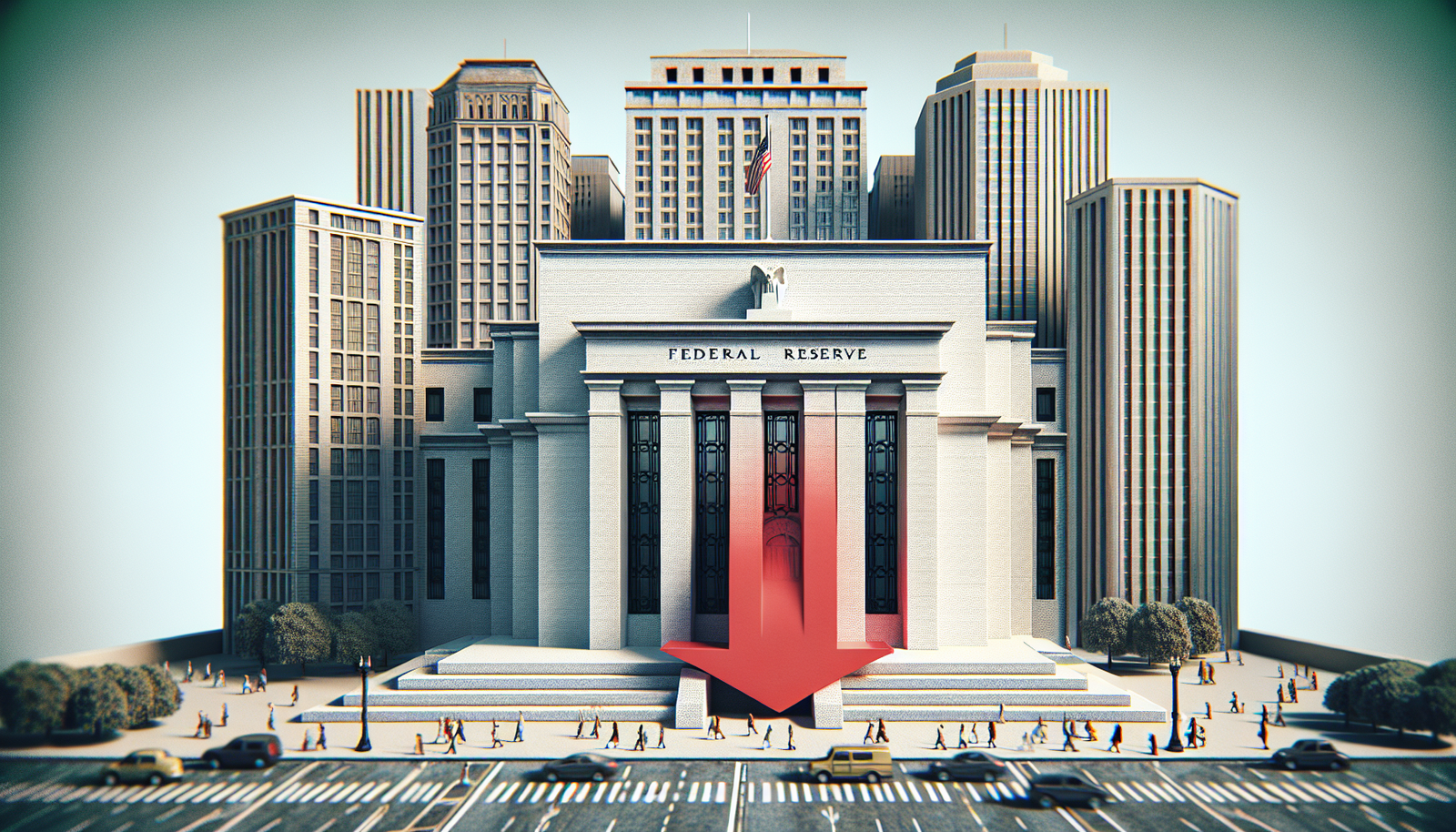
In the grand tapestry of financial systems, a single thread pulled can ruffle an entire sector, causing ripples that, knowingly or unknowingly, echo in your bank account. Sometimes subtle, sometimes audacious, these moves often spring from the heart of the nation’s monetary purveyor – the Federal Reserve. Changing the reserve requirement ratio is one such powerful move. Traverse with us through the fascinating world of economics to uncover the impact when the Federal Reserve decides to reduce the reserve requirement ratio.

Understanding the Reserve Requirement Ratio
The Reserve Requirement Ratio is a deeply important concept within the realm of economics and financial systems, vital to the health and stability of a nation’s economy. You can think of it as a requirement set by a central bank, stating the amount of cash a bank must keep in reserve against the deposits made by its customers. Not all of the money deposited into a bank is kept within its walls. Instead, a certain percentage must be kept handy, waiting for the day it is needed.
The basic concept of the Reserve Requirement Ratio
Imagine you are walking into a bank with the intention of depositing your hard-earned money. You trust the bank to responsibly manage your money. But, behind the scenes, the bank doesn’t keep all your funds. They retain a fraction while loaning the rest out. However, the bank cannot randomly decide on this fraction. That’s where the Reserve Requirement Ratio (RRR) steps in. The RRR, set by the central bank, dictates the specific percentage of total deposits that varient banks must hold in reserve.
The role of the Federal Reserve in defining the reserve ratio
In the United States, the Federal Reserve sets the Reserve Requirement Ratio. Why does someone else decide how much your bank should hold back? Well, the aim is to ensure stability and trust in the banking system, as well as to control monetary policy. Essentially, the Federal Reserve seeks to strike a delicate balance. They allow the bank to loan enough money to stimulate the economy, but also demand it holds back enough to cover potential withdrawals.
How the Reserve Requirement Ratio influences the Economy
The Reserve Requirement Ratio could be compared to a heart valve in the banking system. It controls the lifeblood of the economy — the flow of money. As with our biological heart valves, even the smallest adjustment can have significant effects on our overall functioning.
Impact of the Ratio on banking operations
The Reserve Requirement Ratio profoundly influences the daily operations of a bank. Increasing the ratio means that banks will have a smaller percentage of deposits available for lending. This situation could potentially decrease their profit margin. On the other hand, decreasing the ratio can provide the banks with additional funds, which can then be issued in the form of loans.
Connection between the Reserve Requirement Ratio and the economy’s liquidity
There’s a strong link between the RRR and the overall liquidity of an economy. A lower ratio increases the availability of cash in the banking system, thereby potentially improving economic liquidity. It provides banks with more money to lend, stimulating business investments, consumer spending and, subsequently, economic growth.
Process of Reducing the Reserve Requirement Ratio
Just as the sound of a heartbeat subtly changes as we ascend a hill or sprint for a bus, the Reserve Requirement Ratio can also adapt to the needs of the economy.
Preconditions required for reducing the Reserve Requirement Ratio
The decision to reduce the Reserve Requirement Ratio comes with certain prerequisites. Typically, this measure is employed during adverse economic conditions when borrowing is sluggish, and the flow of money is relatively stagnant.
Steps involved in decreasing the reserve ratio
If the central bank, such as the Federal Reserve, decides to decrease the ratio, it doesn’t happen overnight. Several rounds of debates and discussions precede the decision. Once all decision-makers agree to such a measure, they then determine the extent of this reduction.

Effects on Bank’s Lending Capacity
Just as a heart beats stronger after a rest, the capacity of banks to lend can go through a robust phase when the Reserve Requirement Ratio goes down.
How a reduced reserve ratio impacts bank’s lending ability
A decrease in the Reserve Requirement Ratio is essentially equivalent to loosening the monetary policy. It essentially allows banks to lend more funds than before. The money that was initially meant to stay in reserves, now enters the market as loans.
Increased potential for bank profits
With an increased lending capacity, banks get to earn more from interest, thereby amassing higher profits. However, these increases are not without their own set of challenges. Lending more money, while potentially profitable, also exposes banks to higher risks of loan defaults.
Influence on Money Supply
Decreasing the Reserve Requirement Ratio is like casting a stone into the pond of the economy. The ripple effect is the expansion of the money supply.
Expansion of money supply due to lower reserve ratios
A reduced Reserve Requirement Ratio signals banks to increase their lending. This, in turn, multiplies the money circulating in the economy. More loans translate to more money in the hands of consumers and businesses, which can then be invested or spent, expanding the money supply in the process.
Risk of inflation with increased money supply
With the expansion of the money supply comes the risk of inflation. Increased supply of money could lead to price increases as more money chases the same amount of goods and services. While moderate inflation can be a sign of a healthy economy, unchecked or high inflation can erode the purchasing power of the currency.
Impacts on Economic Growth
The reduction of the Reserve Requirement Ratio brings added color and vitality to the canvas of economic growth. However, like any masterpiece, too many brushstrokes might spoil the scene.
Potential for increased economic activity
Lowering the Reserve Requirement Ratio can dramatically transform an economy. It’s akin to a shot of adrenaline coursing through the veins of economic activity, stimulating quicker business expansion, upticks in employment rates, and greater consumer spending.
Consequences of economic over-expansion
However, a rapid and unchecked economic expansion can come with its consequences. Over-expansion could potentially lead to an unstable economy, increase in default rates, higher inflation, or the creation of an economic bubble that could burst, leading to a recession.
Effects on Banks’ Financial Health
Reducing the Reserve Requirement Ratio is a double-edged sword for the bank’s financial health. It opens up avenues for enhanced profits, but at the same time, exposes banks to greater financial risks.
Increased financial burden on banks
When banks lend more, they tie up their money with their borrowers. However, in reality, not all borrowers repay their loans. These non-performing loans can significantly impair a bank’s financial health, making it a risky proposition.
Potential risks and challenges for banks’ financial stability
Banks need to manage their financial resources prudently. They must balance their loaning activities to ensure stability. An unchecked loaning spree could potentially lead to a banking crisis, triggering wider economic instability.
Implications for Interest Rates
Just as different colored threads are woven to create the fabric of an exquisite tapestry, the Reserve Requirement Ratio, interest rates, and mortgage loans intertwine to form the fascinating panorama of the financial landscape.
Lower reserve ratio’s effect on interest rates
A lower Reserve Requirement Ratio can also influence interest rates. The enlarged pool of available bank funds can trigger competition among banks to lend. This competition might lead to lower interest rates, making it less expensive for consumers and businesses to borrow.
Interplay between interest rates and mortgage loans
In turn, lower interest rates affect mortgage loans. As borrowing costs decrease, more people are inclined to borrow, stimulating the housing market. As more people buy homes, housing prices can increase, creating a ripple effect through the economy.
Impact on Consumer Spending
A lowered Reserve Requirement Ratio is like a delicate melody that compels consumers to dance to its tune, transforming their spending behavior.
Increased borrowing capacity leading to increased consumer spending
Lower interest rates could lead to an increase in consumer borrowing. With easier access to loans, consumers can afford to buy larger ticket items, contributing to an increase in consumer spending, an important driver for economic growth.
Potential increase in credit card spending and personal loans
Similar to the way a river’s current picks up as the water volume increases, the reduction of the Reserve Requirement Ratio can lead to an increase in credit card spending and personal loans. Lower interest rates make borrowing more attractive, and when people borrow more, they generally spend more.
Uncertainty and Risks Involved
The reduction of the Reserve Requirement Ratio can sometimes feel like sailing in uncharted waters. While it can stimulate economic activity, it also involves risks and uncertainties, and it is crucial to navigate these changes with care.
Potential economic uncertainty due to changes in reserve ratios
Uncertainty can stem from the change in reserve ratios. While its immediate objective is to stimulate the economy, the long-term effects can be more unpredictable. It can trigger inflation, market bubbles, and economic instability if not managed effectively.
Financial stability risks as a result of reduced reserve requirements
Financial stability risks could surface as a result of reduced reserve requirements. The likelihood of bank losses from loan defaults may increase. Also, with increased lending, banks may risk a higher likelihood of a bank run, a situation where a large number of customers withdraw their deposits simultaneously due to fears of the bank’s insolvency.
In conclusion, the Reserve Requirement Ratio is a key tool in the arsenal of central banks. It touches almost every aspect of the economy and can be fine-tuned to maintain financial stability and foster economic growth. It’s a delicate balance, a symphony of policy and practice, impacting banks, businesses, and individuals alike.

